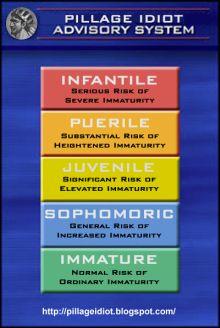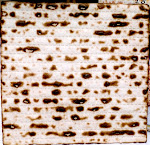This article in the New York Times this morning is interesting and (assuming it was not intended to tip off the terrorists) possibly a good sign that screening techniques can move beyond the search-anyone-but-a-guy-who-looks-like-a-terrorist strategy now in place.
DULLES, Va., Aug. 16 — As the man approached the airport security checkpoint here on Wednesday, he kept picking up and putting down his backpack, touching his fingers to his chin, rubbing some object in his hands and finally reaching for his pack of cigarettes, even though smoking was not allowed.It's not perfect, by any means.
Two Transportation Security Administration officers stood nearby, nearly motionless and silent, gazing straight at him. Then, with a nod, they moved in, chatting briefly with the man, and then swiftly pulled him aside for an intense search.
Another airline passenger had just made the acquaintance of the transportation agency’s “behavior detection officers.”
Taking a page from Israeli airport security, the transportation agency has been experimenting with this new squad, whose members do not look for bombs, guns or knives. Instead, the assignment is to find anyone with evil intent.
So far, these specially trained officers are working in only about a dozen airports nationwide, including Dulles International Airport here outside Washington, and they represent just a tiny percentage of the transportation agency’s 43,000 screeners.
But after the reported liquid bomb plot in Britain, agency officials say they want to have hundreds of behavior detection officers trained by the end of next year and deployed at most of the nation’s biggest airports.
But Rafi Ron, the former director of security at Ben-Gurion International Airport in Tel Aviv, who was a consultant who helped train the officers at Logan Airport, said that the agency’s system, while a welcome improvement to airport security, was still flawed. Most importantly, he said, too few of the passengers pulled aside were more formally questioned as in the Israeli system, and when questioning was done, it was handled by local police officers who might not have had the necessary behavioral analysis skills.But it's a start. And oddly enough, the ACLU is not fond of it.
He cited the case of Richard Reid, known as the shoe bomber, who aroused suspicion when he arrived at Charles de Gaulle International Airport outside Paris, but was ultimately allowed to board after the police had questioned him.
“If you don’t do the interviews properly, you are missing what is probably the most important and powerful part of the procedure,” he said.
The technique has already produced at least one lawsuit, filed in Boston. The state police at Logan Airport there happened to pick out, based on behavior observations, the national coordinator of the American Civil Liberties Union’s Campaign Against Racial Profiling.But listen to the complaint about this program:
The coordinator, King Downing, who is black, had just left a flight when he stopped to make a phone call and noticed that a police officer was listening in, the lawsuit says. When the call ended, the officer demanded Mr. Downing’s identification, asking again as he approached a taxi and then telling him he would be “going downtown” unless he provided it. Mr. Downing was let go after he showed his identification, but the encounter led to the lawsuit.
“There is a significant prospect this security method is going to be applied in a discriminatory manner,” said John Reinstein, an A.C.L.U. lawyer handling Mr. Downing’s case. “It introduces into the screening system a number of highly subjective elements left to the discretion of the individual officer.”This is called professional experience, and it's an important tool of policing. What do they want? A computer program? They'd object to that, too.











|